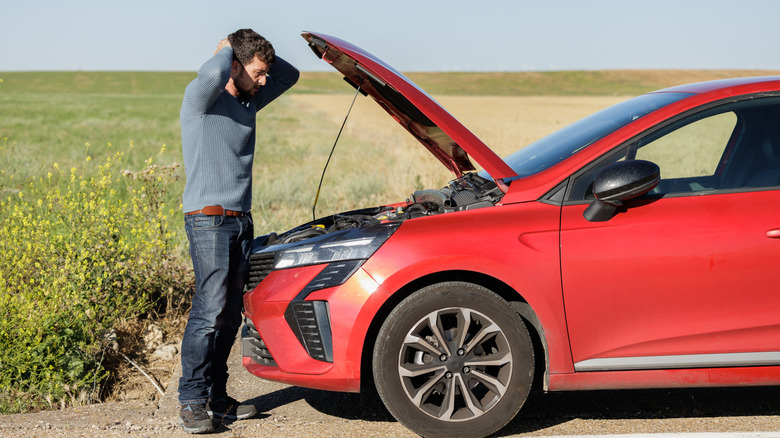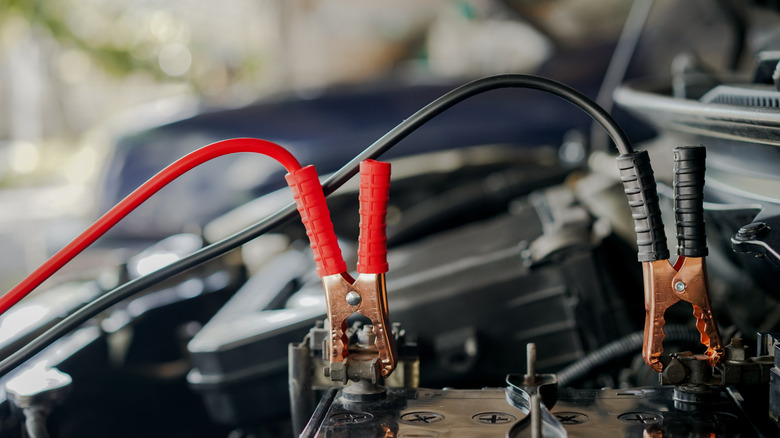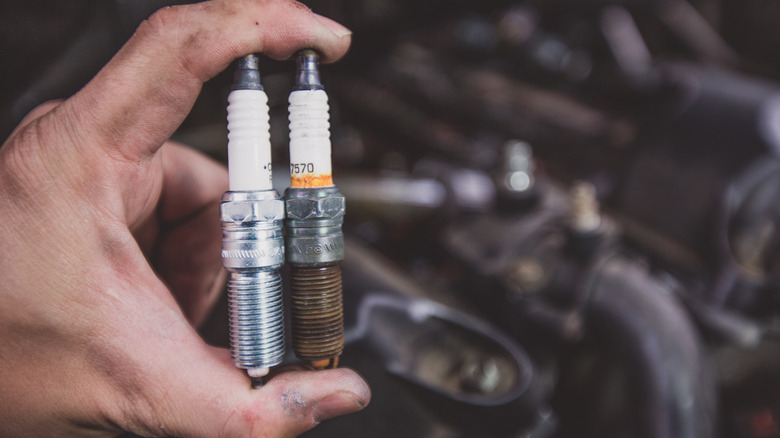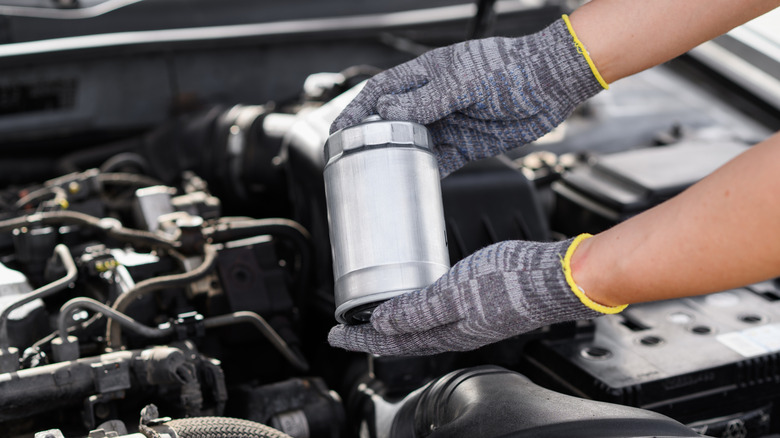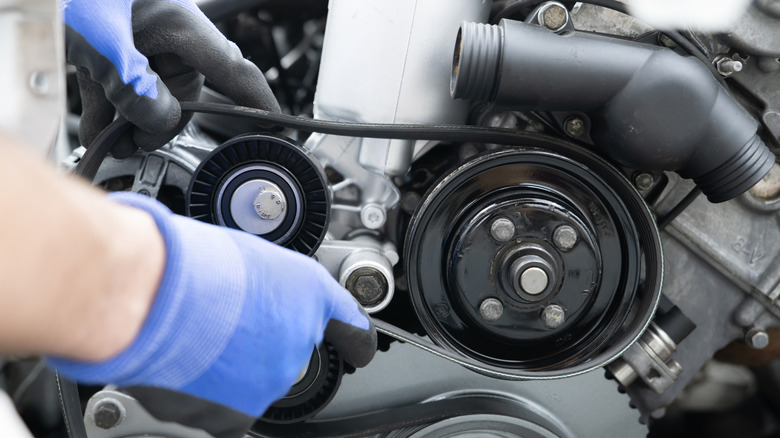5 Possible Reasons Your Car Is Turning Over But Won't Fire
The dreaded chug of a car that just won't start is no doubt all too familiar to most drivers. However, there are plenty of reasons why a car's engine won't kick into action, and owners that understand what might be wrong will often opt to rely on the services of a professional mechanic to get their vehicle back on the road. This can be costly; the average trip to the shop runs drivers somewhere between $300 and $500 for a breakdown. But it really doesn't have to be this way.
Even though vehicles have become far more technically complex in recent decades, there are actually plenty of fixes you can impart upon your car without help. With a few essential engine maintenance tools, a bit of know-how, and some tinkering, making your car run smoother and hammering out problems under the hood will cease to feel like the rocket science that some mechanics make it out to be. In fact, it's also a good idea to get to know the terminology and some basic repair operations to help weed out shady mechanics in the event you do end up bringing your car to a shop for engine firing trouble or other issues. If your car is turning over, you likely don't have a massive problem on your hands, but rather a simple clean out or part swap to handle. These are five problem areas that can cause your engine to cough along without actually firing.
A dead battery, alternator issue, or an empty fuel tank
Perhaps the most obvious problem that may be impacting your vehicle is a dead battery. The average automotive battery has a service life of roughly three to five years, but if your car is frequently subjected to harsh environmental conditions or you exclusively use your vehicle for short commuter trips, it may be shorter. As you drive your car, the battery recharges, so you typical driving habits can impact your battery health significantly. If your battery is dead, it won't provide the kickstart necessary to get your engine running. This issue can be remedied in the short term with the help of a jump starter or a friend's operational car battery. Jump starting your car is a basic skill every driver should know.
If you are unable to get your car started even with a jump, you may be dealing with a different electrical problem. Your alternator regulates electrical current moving through the system as a whole. If your battery is still viable, but can't provide the charge necessary, its possible the alternator or starter has gone bad and needs replacing. One final point of focus is the gas tank. If you run out of gas, you obviously won't have the resource necessary to fire the engine. These are largely easy problems to diagnosed and fixed, so they act as a good starting point when exploring problems under the hood.
You need to change your spark plugs
If your spark plugs are bad, your car is effectively delivering gasoline to the engine without anything igniting the fuel. Your engine will still turn over, but it obviously can't perform the basic function it's designed to do. The average spark plug is rated for a service life in the neighborhood of 80,000 miles, but all manner of complications can shrink that number. If a car sits idle for a long time, grime can build up here and prevent them from working properly. Poorly installed spark plugs can also go bad early, as can those that have been subjected to faulty electrical systems or consistent overheating. Worn out fittings can also lead to oil saturation that ultimately erodes the unit's viability faster than expected.
It's entirely possible to change spark plugs on your own. A spark plug typically costs a few bucks (and up to around $20 for premium variants) at your local auto parts store, and with a few key tools in your arsenal you can make the swap quickly and easily. If the simple answers for your engine problems don't pan out, this should be one of your first checks when diagnosing starting issues. Even if this isn't the underlying trouble it will result in a smoother operation overall, improving the experience you have behind the wheel once you do eventually solve the problem.
Fuel filter clogs or a fuel pump failure
In order for your engine to operate properly, it needs a steady flow of a few key ingredients. Gasoline is one of the obvious components of this mixture. If your engine isn't receiving a sufficient supply of fuel, it can't ignite it and start operating, and it can happen for a few reasons. There may be an issue with the fuel line between the gas tank and your engine's chambers. Your fuel pump can even start to fail while still providing enough gasoline to the engine for it to operate — listen for strange noises coming from the fuel tank or an inconsistency in power when you step on the gas pedal. If the car isn't operational, a fuel pressure gauge can help identify a failure in this part.
On the other hand, you might have a clog in the fuel filter. This component exists to keep the fuel clean as it enters your engine. Contaminants can degrade the performance of your vehicle if they are allowed to enter the engine and negatively impact the sensitive nature of these highly technical, precision components. This filter therefore collects debris over time as your vehicle runs. If the fuel filter is particularly clogged up with gunk, it may ultimately act as a barrier preventing fuel from passing into the engine. Changing out the fuel filter can therefore be a quick fix for a simple problem.
Your timing belt has failed
Your timing belt syncs up the engine components as they move. You may not have any issues with each individual moving part, but if your timing belt has broken or is degrading, the components may not be working in tandem as well as they should. A timing belt can crack or start to rot, creating misalignments along the track, or even elongate and start to slip off its fittings.
Generally speaking, your timing belt will break while the engine is running rather than while the car isn't in use. If this happens, you'll likely hear a ticking noise coming from under the hood. This happens because the belt is no longer fixed in its position and is wobbling around or slapping against another component as it moves. However, this can also be a sign that you are running low on oil and the pressure is dropping. You'll also likely experience engine misfiring. This happens because the timing belt is no longer keeping the cylinders in sync and one or more of your engine cylinders will stop opening and closing at the precise interval that the engine should maintain. If you have started to experience these kinds of issues, you might turn your car off and when you turn the key again the timing belt may no longer be positioned properly, and therefore won't turn resulting in that classic clicking noise without the engine firing.
The air filter is preventing oxygen from reaching the engine
A clogged air filter is perhaps the least likely potential reason for an engine that won't start. However, it's worth investigating this avenue especially if no other fix has been successful in bringing your car back into operation. Fuel and oxygen mix together in the engine to provide the essential propulsion for your vehicle. The spark plugs held within each cylinder of your engine can't ignite fuel unless air is also present. If your air filter is excessively dirty, there may not be enough oxygen flowing into the engine to provide this secondary, crucial ingredient in the fuel mixture.
Therefore, it's worth inspecting your air filter and possibly even changing it out if it looks dirty. As is the case with many other fixes for engine trouble and other issues, there is a cumulative, stacking effect that can take place. Numerous components may be working relatively fine but when the individual inefficiencies of each component are stacked upon one another the results can combine into a larger problem. Even if a dirty air filter isn't the root cause of the issue, it might contribute to the totality of the problem you're facing under the hood.
